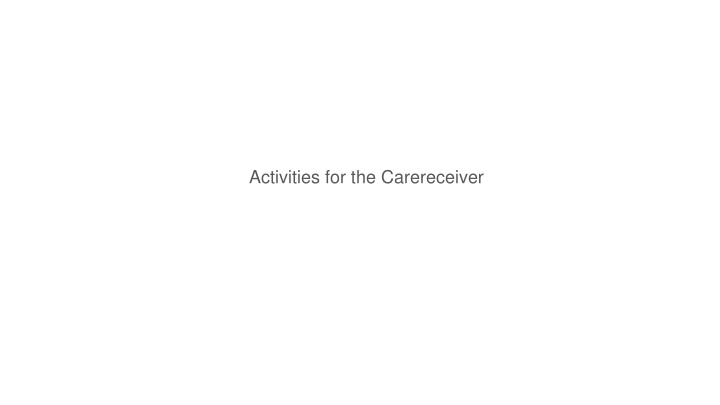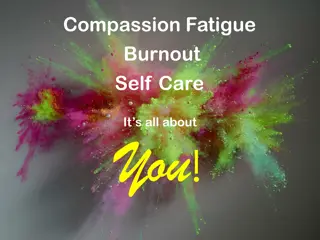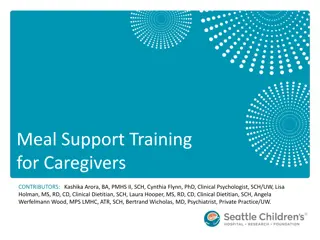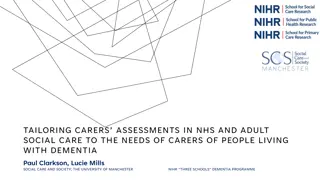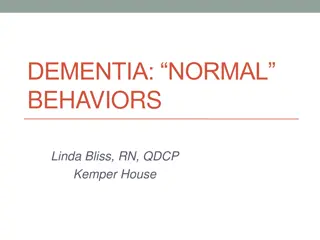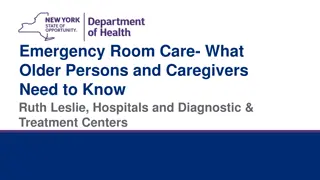Helpful Activities for Caregivers
Activities like coping cards, self-monitoring mood charts, and behavioral activation can assist caregivers in supporting their loved ones in managing difficult situations such as depression and suicidality. These practical tools aim to promote mental well-being and enhance communication between caregivers and care receivers.
Download Presentation

Please find below an Image/Link to download the presentation.
The content on the website is provided AS IS for your information and personal use only. It may not be sold, licensed, or shared on other websites without obtaining consent from the author.If you encounter any issues during the download, it is possible that the publisher has removed the file from their server.
You are allowed to download the files provided on this website for personal or commercial use, subject to the condition that they are used lawfully. All files are the property of their respective owners.
The content on the website is provided AS IS for your information and personal use only. It may not be sold, licensed, or shared on other websites without obtaining consent from the author.
E N D
Presentation Transcript
1: Coping cards Description: Coping cards can help you to prepare for the certain situations by writing down helpful coping strategies ahead of time, so that you can read through these statements when you would find it difficult to access helpful thoughts and ways of viewing situations. Coping cards can serve as general reminders or more specific recommendations, behavioral techniques or list of positive thoughts that can help in particular situations. Try to create you own coping toolbox! The following page shows examples of the coping cards!
Coping card for dealing with suicidality of the loved one Be prepared for the possibility that you may feel suicidal. Take all signs of suicidal behavior seriously Act immediately Contact a doctor, a hospital or emergency medical services for help. Let other family members or close friends know what's going on Remove all available means of attempting suicide Coping card for dealing with depression Try to keep in touch Be willing to listen Don't be critical Be understanding Help create a low-stress environment Support them to get help Help them to adhere to treatment Show patience Stay alert for warning signs of suicide
2 - Self-monitoring - mood charts Self-monitoring using mood charts Self-help activity (based on principles of cognitive- behavioral therapy) where you can record your mood, usually at set time intervals, in order to connect the feelings to what happened during the day. A mood chart can help physician, therapist, or psychiatrist give a more accurate diagnosis and treatment. It allows to see patterns in the daily life and to better understand the triggers for worsening.
Daily Mood Chart Happy Sad Mad Tired Excited Anxious Other Notes 6 AM 8 AM 8 AM 10 AM 10 AM 12 PM 12 PM 2 PM 2 PM 4 PM 4 PM 6 PM 6 PM 8 PM 8 PM 10 PM 10 PM 12 AM 12 AM 2 AM 2 AM 4 AM 4 AM 6 AM
3 - Behavioral activation Behavioral activation is an activity based on principles of cognitive-behavioral therapy, where you can help the person you care for to develop a very specific plan to engage in activities. They should be simple, such as doing the dishes, going for a walk, or calling a friend. The aim is to increase the contact with sources of reward by helping the loved ones get more active and, in so doing, improve their thoughts, feelings and life context. Developing a healthy, daily routine can help stabilize moods and establish order and calm.
3 - Behavioral activation Consistent routines are regular eating times, holistic activities (activities that can help strengthen the mind, the body and the spirit, for example: mindfulness, meditation, walking, having pats, knitting/crocheting etc.), physical fitness, therapy sessions, sleep times, reminders for medicine intake Behavioral Activation You can begin to decrease depression by engaging in activities you find enjoyable, and by taking care of responsibilities that you have been neglecting. List three activities you enjoy: 1. 2. 3. List 3 responsibilities you need to take care of: 1. 2. 3. Try doing at least one activity or responsibility each day and use the following scale to rate your depression, your pleasant feelings and the sense of achievement before and after the activity.
